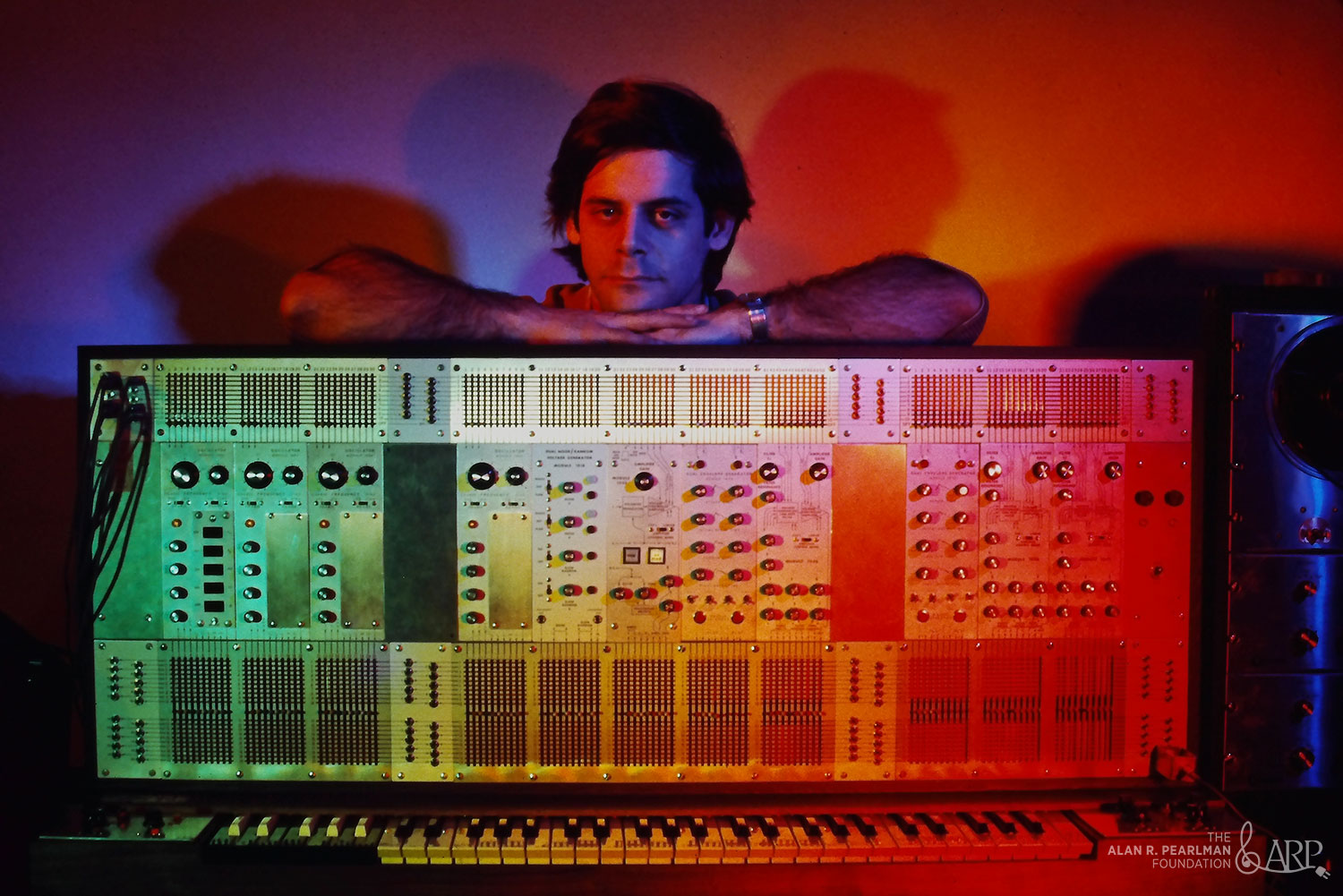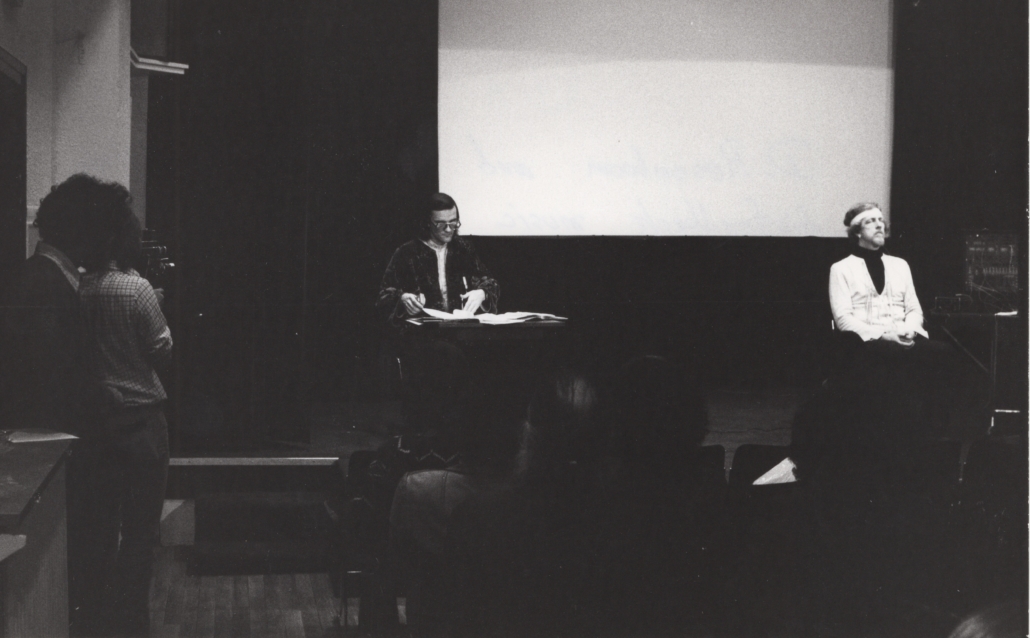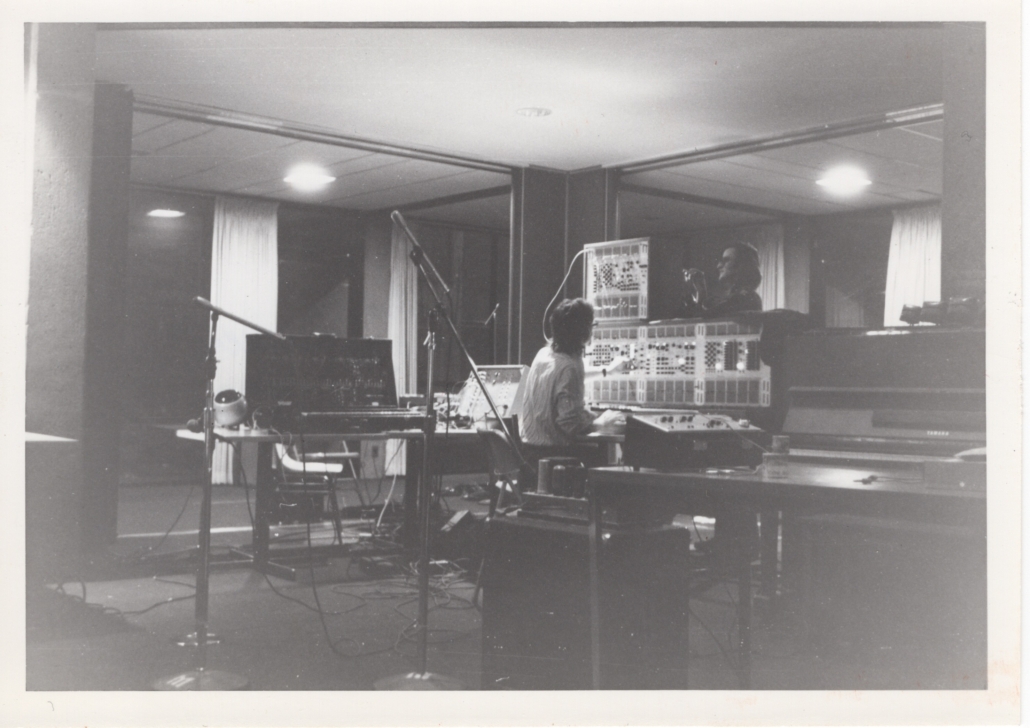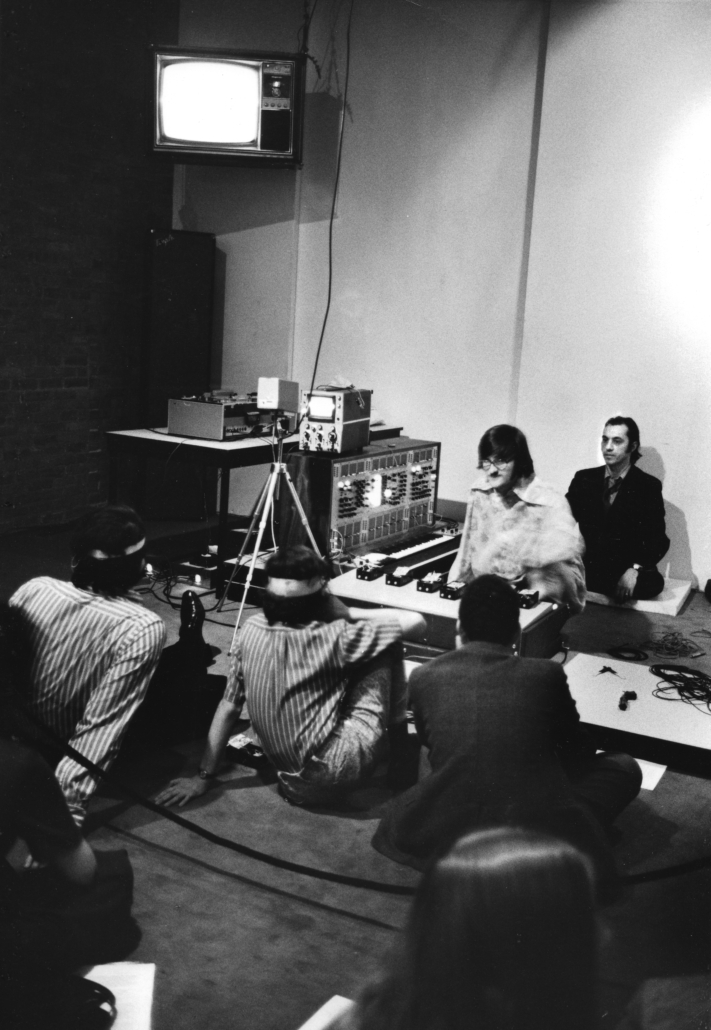This article was written by Anastasia Chernysheva, Ph.D. student at University of Illinois Urbana-Champaign.
This article zooms in on how American experimental composer David Rosenboom (b. 1947), a pioneer of brainwave music, employed the ARP 2500 and 2600 for his early 1970s neuromusical compositions. Beginning with a hippie-like trip for a promo of 2500, the relationship of Rosenboom and the ARP synthesizer traversed in something different than just interaction in music performance – the instrument became a part of the neurofeedback system created by young visioneer. Its follower, ARP 2600 would have the star moment featured in the Mike Douglas Show – being used for ‘plugged in’ John Lennon and Yoko Ono composing with their brains. Finally, the ARP synthesizers will travel with Rosneboom to York University in Toronto – becoming the point of attraction for students in one of the early academic electronic music Studios in canada.

Rosenboom manipulating ARP 2500 for the installation (1970). Photo by Peter Moore, from the personal archive of David Rosenboom.
Summer’70 Promo Tour with Gerald Shapiro
Rosenboom and the founder of the electronic music studio at Brown University met back in the time when David was a student at the University of Illinois Urbana-Champaign (1965-67) – then the center for experimental music in the US. Later the two met again at SUNY Buffalo where Rosenboom was a Creative Associate (1967-68). The circumstances brought them together together once more, in 1969 at the Audio Engineering Society convention in Los Angeles where Rosenboom presented a talk about his Neurona modules. At that time Gerald “Shep” Shapiro was a consultant for the ARP instruments. Somehow, that summer, Rosenboom ended up at Terry Riley’s house, learning with him playing tabla.

Gerald ‘Shep’ Shapiro with an ARP 2500, from the ARPchives, courtesy of the Alan R Pearlman Foundation
In the book of Eliott Schwartz [1], there’s a picture of Rosenboom sitting in front of the ARP synthesizer with a set of tabla. The image was made during the ’70 tour of Rosenboom and Shapiro – driving across the US in a van with ARP 2500 (both provided by the company). The friends did electronic music concerts in Washington, D.C., at George Washington University, in Nashville, and a couple of other places. On the way, they composed some electronic music pieces for ARP and other instruments – such as percussion or keyboard.
Excerpt from the book of Eliott Schwartz.
Ecology of the Skin – neuromusical installation at Automation House
Yet, the true star moment of ARP 2500 awaited. On December 4th of 1970, the brainwave musical performance and installation called Ecology of the Skin was presented at Intermedia Institute, Automation House in New York. [2] The title may be interpreted as a metaphor for skin as a boundary separating individuals from their external environment and ecology of the boundary between the internal and external worlds.
The program announcement said, “Young composer introduced his new group-dynamic brain-wave and electro-encephalographic audience-activated work. A workshop demonstration will be held on Thursday afternoon, December 3, 1970, at 4:30.” [3]
For the performance of the piece, EEG monitors built by Rosenboom were attached to the heads of up to ten participants to detect alpha as well as different forms of coherent waves (smooth alpha, beta, theta, delta). An electronic music system utilizing detection and analysis equipment, an ARP 2500 synthesizer, a Vox electric organ, and auxiliary devices, were used to translate brainwave performers’ EEG activity into electronic sounds, as well as to interact with participants musically. Installation-wise, the EEG signals of performers, processed through individual electronic circuits, were used to generate visual imagery projected from the oscilloscope.
A year later, in an episode of the famous Mike Douglas Show, hosted by John Lennon and Yoko Ono, Rosenboom employed ARP 2600 for the piece Brain Music for John and Yoko (1972). After a short introduction of audience to the topic, Rosenboom wired Douglas for a test, and then gave a floor for the brainwave performance of John and Yoko. Composer himself was also a part of the trio adjusting some parameters of the synthesizer and playing an electric keyboard – somewhat ‘conducting’ the brainwave musical output. [4]
Since that time Rosenboom began to gravitate to custom-made electronic systems and eventually ended up using Buchla 300 for his 1976-77 piece On Being Invisible. [5] Though for the widely performed Portable Gold and Philosophers’ Stones (Music for Brains in Fours) (1972) and occasional brainwave demonstrations, the composer still employed the 2600 version.

Rosenboom and J.B. Floyd with a brainwave music demonstration (1974). Photo from the personal archive of David Rosenboom.
ARP 2500 lands at York University
Ultimately, in 1972 Rosenboom brought both the 2500 and 2600 versions to Electronic Music Studios that he directed at York University. The instruments located at Studio A was extensively used for teaching students the basics of electronic music synthesis, and some of the brainwave music techniques – i.e. control the sound coming out of ARP through mindstates, as an opposite to the keyboard control.
Among students who recall the powerful exposure to the instrument are Toronto-based gamelan virtuoso Andrew Timar and NY-based pianist Diane Roblin.

Rosenboom (standing) and Andrew Timar (controlling ARP 2500) at York University. Photo from the personal archive of David Rosenboom.
References:
[1] Schwartz, E. (1975). Electronic Music: A Listener’s Guide. Greenwood.
[2] Rosenboom, D. (1972). Method for producing sounds or light flashes with alpha brain waves for artistic purposes. Leonardo, 141-145.
[3] Lathem, T. (1970) Intermedia Series at Automation House, 1970-71. [Program]. Personal archive of David Rosenboom. Valencia, CA, United States.
[4] Rosenboom, D. (Ed.) (1975) Biofeedback and the Arts: Results of Early Experiments. Aesthetic Research Centre of Canada Publications, Vancouver.
[5] Rosenboom, D. (1977) On Being Invisible, 1976-77. Video documentation courtesy of Western Front. Composer’s YouTube Channel.
*For more historical information about the work of David Rosenboom, a reader may proceed to: the Rosenboom Archived Instagram Page










